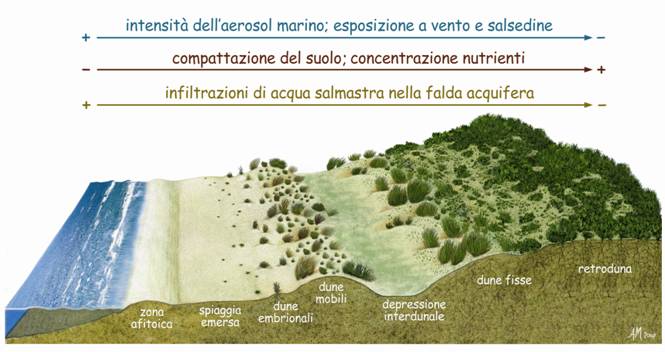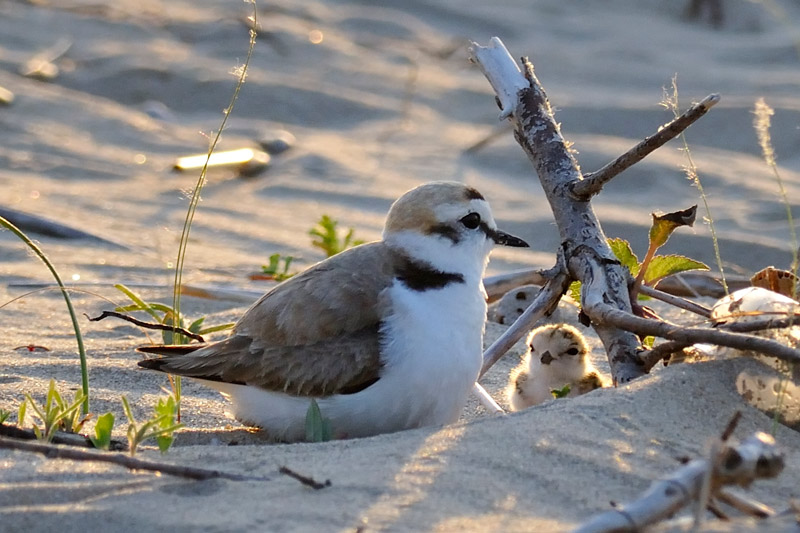
Passoscuro dunes are a beautiful dune environment about three kilometers, crossing from the mouths of two watercourses (Fosso Cupino North and the Rio Palidoro further South).
The environment of these dunes is great but also very fragile, that's why it should be protected with all our efforts.

The dunes are formed by the action of winds blowing from the sea inland, where the waves bumping up against cliffs, islets or reefs infralitorali lose kinetic energy and deposited the sand.
The dunes are not static structures, are unstable, they are subject to constant moving and downsizing caused by management and by the force of the wind.
Usually the side of the dune sea facing is struck by the erosive action of wind, while the protected side grows for the accumulation of sand grains. The sand starts to accumulate when he meets the rocks or plants. The vegetation has therefore a fundamental importance for the formation of coastal dunes, because it creates an impediment for the advancement of sand inland.
Beach environments are difficult conditions for the survival of plants due to multiple factors, including the strong salinity of sands, the lack of fresh water, the constant wind and poor in nutrients.
That's why appear even more interesting and unique flora and fauna of this ecosystem.

The dune cord is low, but rich in plant species typical of these environments, the sand. You can still find herbaceous species populations, mainly the thorny sea Holly (Eryngium maritimum) and some individuals of fennel salmon (Echinophora spinosa), in addition to the beautiful sea lilies (Pancratium maritimum), together here and there to Kalli specimens (Cyperus kalli). There is also marina Chamomile (Anthemis maritima), santolina beaches (Othanthus maritimus), bearbind marittimo (Calystegia soldanella) and the sea ravastrello (Cakile maritima).
All species in the spring let you admire the splendid flowering of dunes.

The Snowy Plover, an important little inhabitant of the dunes
The dunes are also an important place for many species of seabirds and waders (i.e. those who attend and feed in damp and marshy, as herons and egrets) who frequent this place, and that can be observed around the mouth of the Rio Palidoro especially at dawn.
Do not forget the Snowy Plover, a small bird that breeds in February-March from plant materials beached on the dune. This bird is a good indicator of the quality of dune environment, although today it is increasingly endangered due to habitat changes. Unfortunately, in addition to contend with gulls, Ravens, Canids and other mammalian predators, must contend with the man, who often destroys and disturbs its environment or simply stomps its eggs.
We want to finish with this beautiful phrase borrowed from the Zero Waste Committee Buckeye:
“Le Dune di Palidoro are historical and natural treasure of our territory and deserve respect and attention.
Unfortunately the indifference, neglect, aggression and barbarism men are turning into an area preyed and abusive discaricatori.
Curiamole and amiamole, rather than degrade them, and will reward us with the beauty that only nature can give. ”